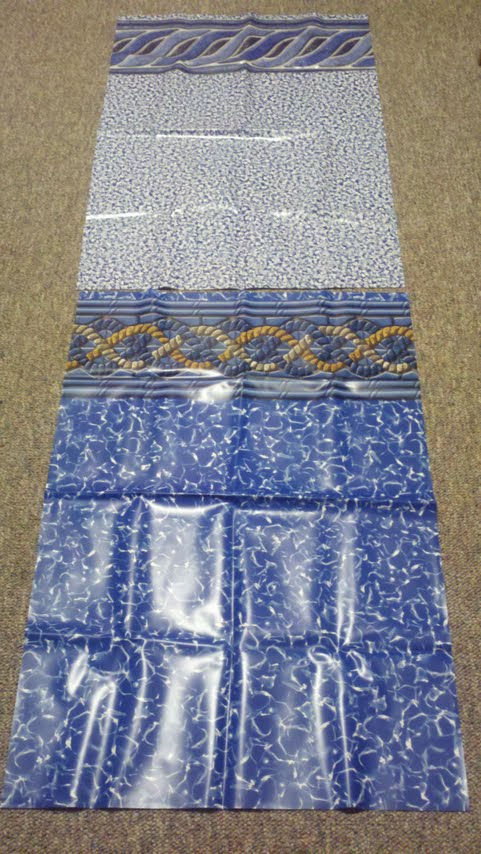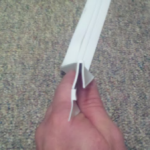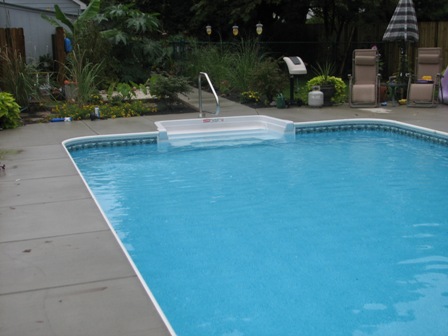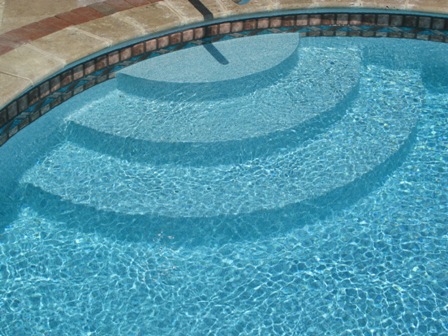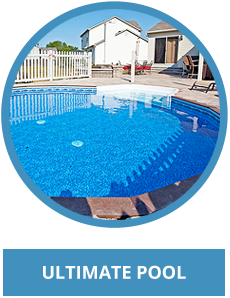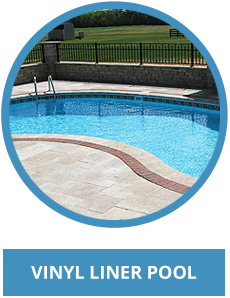What do you mean I need string lines in the bottom of my pool? When I am talking about string lines, I do not mean when the pool is finished. When the liner is installed you do not want anything underneath it but the material used for the bottom of your pool. And you want it to be completely clean.
So what do I mean by string lines in the bottom of the pool? During the construction of your pool, when the bottom is being done is when your contractor should be using string lines. Whatever style or shape the bottom of your pool will be, the use of string lines insures that the dimensions and measurements are right.

Correct Depth!
This is the biggest reason why I feel that setting string lines are important. Once the wall panels for your pool are set in place and leveled, your contractor should measure from the top of the wall down into the hole to get the exact depth. We will set rebar pins and tie off string line so we know right where we are supposed to be. Whether your pool is going to have a finished depth of 8’, 6’ or whatever you decide on, the way to make sure it is exact is to set string lines.
Liner Fit!
The liner will be made to fit your pool. Your contractor will have a dig sheet showing the dimensions of the liner for your pool. They now have to build the pool to fit the liner. Do not let your pool builder tell you they can stretch the liner in place. Liners will stretch but it should never be more than 1”, two at the most. If the liner is stretched into place it will cause it to be pulled to thin in spots, which shortens the life of the liner. No matter how well the dig is done, unless string lines are set, there is no reference point to go off of when the pool base material is installed. Setting reference points with string lines can cause extra work. There will probably be places than need to be cleaned out, either by shovel or possibly a pick. Possibly there needs to be gravel added to the bottom to fill in low spots. Most pool builders I have seen will not take the time to do this. They place the bottom material by putting just enough to cover the dirt and say “we’ll let the liner stretch in place”, not caring to make sure the dimensions for the bottom are right. Not good.
Pool Base Material!
Whatever your pool builder uses for the base of your pool, whether it is a vermiculite mix or a grout concrete mix, it needs to be installed at a certain thickness. This is where settings string lines allows for the builder to see if there is enough room between the dirt and the string to install the base material at the proper thickness.
If you want the liner for your pool to fit like it was made too, it is a good idea to make sure your contractor sets string lines as reference points. Don’t get me wrong. You can “eyeball” it close. When you are spending thousands of dollars on your pool project though, do you want it close, or exact?

Happy swimming!!


